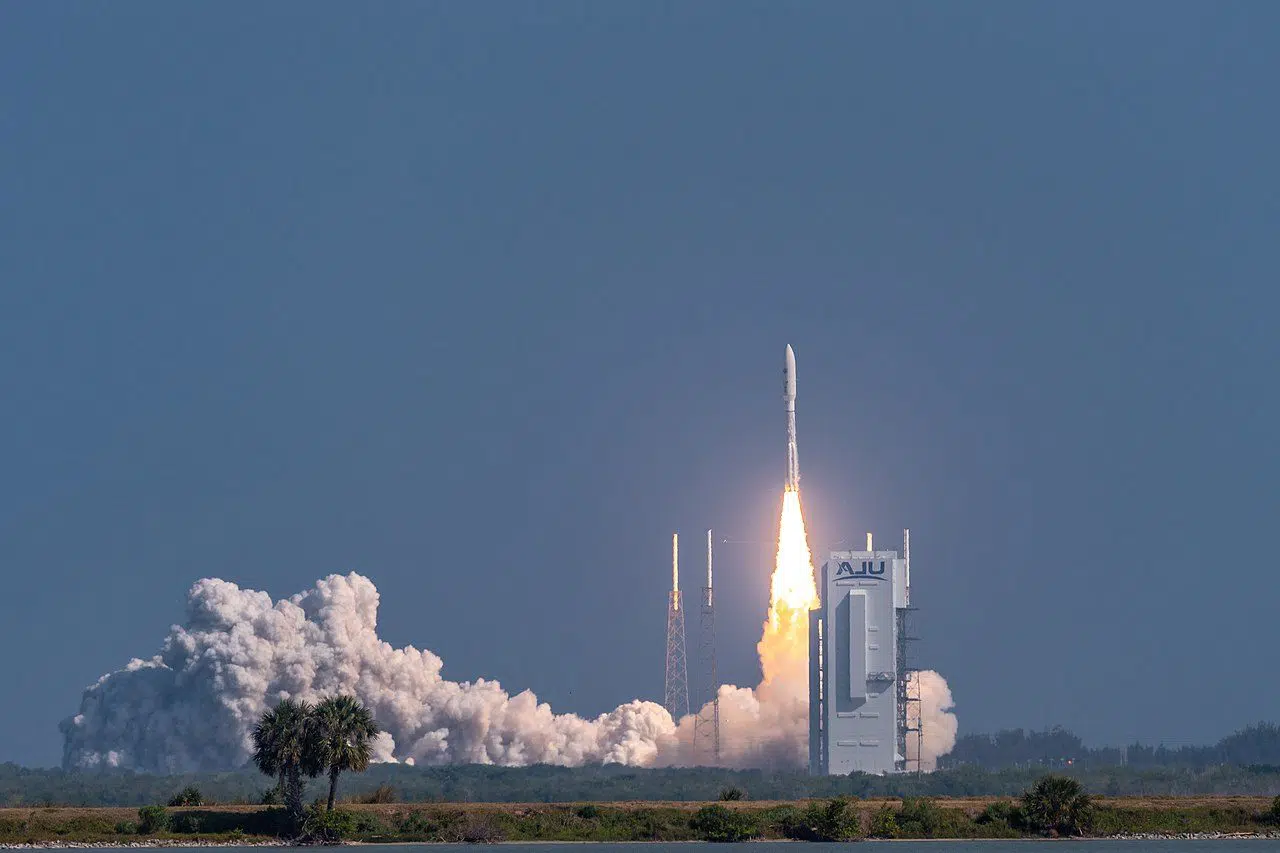On December 20, 2019, America added its first new military branch in 72 years. To the general public, the creation of this service may have appeared spontaneous. But in fact, America’s new Space Force is the result of decades of planning and development.
Space Force was created by absorbing the space operations of multiple service branches, including the Army and the Navy. But it drew most heavily from the Air Force, which has had the greatest influence on its development. In fact, Space Force drew its initial corps of 16,000 personnel entirely from the Air Force. In the same way that the Air Force grew out of the Army, Space Force is the offspring of the Air Force.
In many ways, Space Force can trace its origins back to September 1, 1982, when the Air Force established the Air Force Space Command. As the name suggests, the USAF Space Command had space operations as its primary mission. It focused on missile warning, launch operations, satellite control, and space surveillance. Space Command played an important role in establishing the Global Positioning System (GPS), which was originally developed for military use and has since made its way into hundreds of commercial applications.
If humankind’s use of space had stayed as it was in 1982, there would probably be no Space Force today. But the world, and global technology especially, has changed considerably in the past four decades.
The Rise of Satellite Infrastructure
The first cell phone call was made in 1973, on a phone that weighed 2.4 pounds and lost its battery charge after 30 minutes of use. Ten years later, around the time that the Air Force founded Space Command, cell phones became available to the general public. The phones were still big and heavy, and cost about $4,000—the equivalent of about $11,000 today.
Over the next three decades, phones became smaller and lighter, and their capabilities exploded. The first cell phones could do nothing more than make scratchy phone calls. Today’s phones are minicomputers, filled with dozens of apps. And as the cell phone has become more useful, it’s also become essential to everyday life.
We can now bank, get directions, and write letters on our phones. We get our information and entertainment from our phones. And of course, we make calls and send texts using our phones. All of this is made possible by a network of thousands of communications satellites.
Satellites are also crucial for weather forecasting, climate monitoring, and other earth sciences. Your local ATM relies on satellite technology. Businesses use GPS to time-stamp credit card purchases. Engineers use satellites to monitor ground movement and ensure the stability of bridges and roads. Satellites are now a crucial part of every country’s infrastructure, which is why their defense has become so important.
Defending Assets in Space
In 1957, Russia launched the first artificial satellite. Today, nearly 3,000 human-made satellites are orbiting the Earth, and that number is expected to quintuple by 2030. In other words, the space surrounding Earth is getting crowded.
Compared to other types of infrastructure, satellites are particularly vulnerable. Since objects in orbit around the earth travel at thousands of miles per hour, if a satellite collides with even a small piece of debris—the size of a dime, perhaps—the collision can seriously damage or even ruin the satellite. And with more and more satellites going into orbit around Earth, accidental collisions are becoming more likely.
And there are intentional threats as well. Several countries are currently developing technology to disable or destroy satellites. Laser dazzler systems can confuse or damage a satellite’s optical sensors. Jamming systems can be used to purposely disrupt the data stream between satellites and facilities on the ground. This equipment can even send fake location data, rendering GPS systems useless.
Satellite infrastructure is threatened at the very moment it’s become indispensable to our modern way of life, which is why protecting the integrity of U.S. satellites is a core duty of the newly formed Space Force. It’s part of the service’s mission to preserve space as a global commons, and to protect its use for security, commercial, and social benefits.
This important mission is just the beginning for Space Force. The service will also play a role beyond the near-Earth, supporting NASA’s missions as the U.S. returns to space exploration. As General Jay Raymond, Chief of Space Operations, has said, “The sky is not the limit.”
PRIDE Welcomes All Veterans
For fifty years, PRIDE has welcomed veterans from all branches of the military. We know that the training they receive while serving our country makes them valuable employees once they return to civilian life. And PRIDE is not the only company to recognize the benefits of hiring veterans. PRIDE now helps companies across the U.S. find these sought-after employees through our Inclusive Talent Solutions initiative.
To seek out these highly valued employees, PRIDE offers an online tool designed specifically for veterans: the Military Skills Translator. With the Skills Translator, veterans can easily determine which civilian jobs—whether with PRIDE or another company—best correspond to the valuable experience they gained while serving our country.
As it has throughout its history, the U.S. military is adapting to a new environment. But no matter what changes come, PRIDE looks forward to many more years of welcoming veterans—including those from the United States Space Force.
Image: An Atlas V rocket launched from Cape Canaveral on March 26, 2020. It was the first Defense Department payload launched for the United States Space Force. Photo by Joshua Conti.

